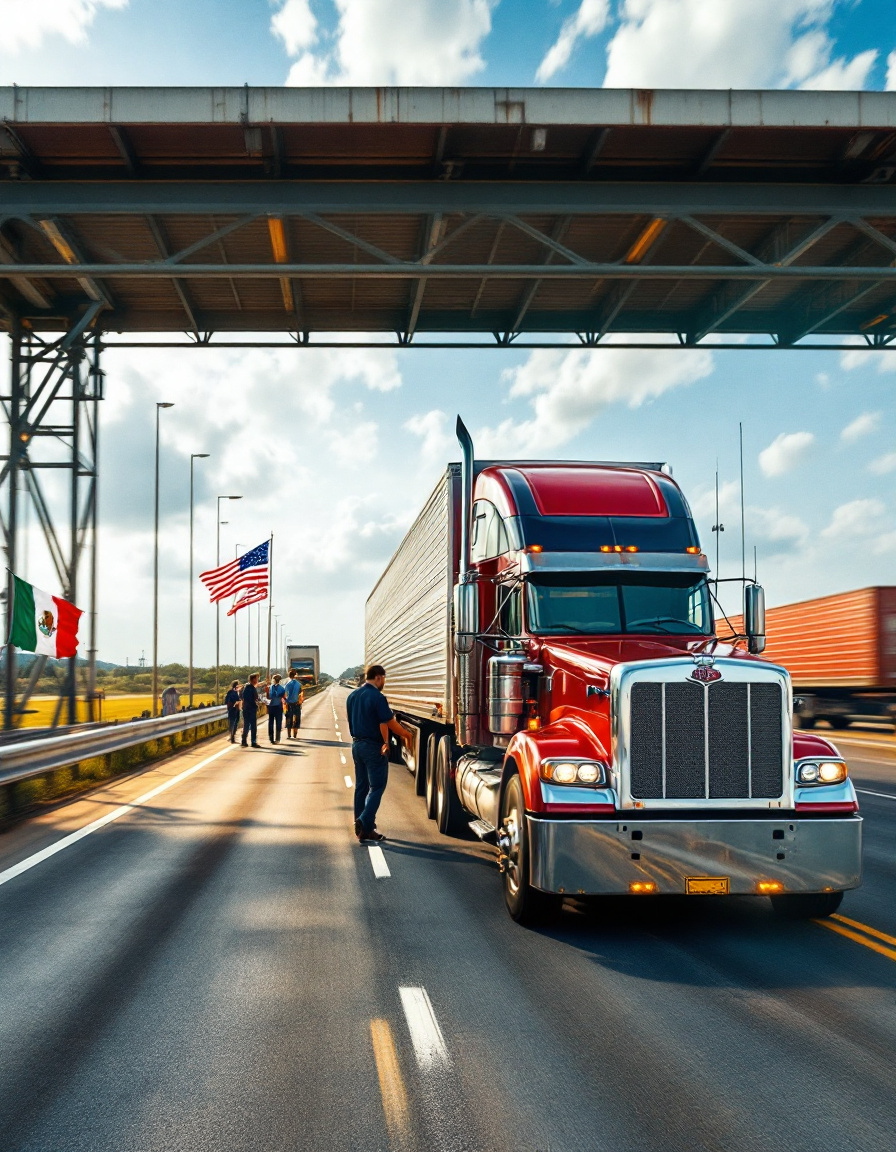Why Cross-Border Freight Shipping USA-Mexico Matters in 2025
In 2025, cross-border freight shipping USA-Mexico remains one of the most critical trade routes in North America.
With over $1.7 billion in daily trade flowing between the two nations, seamless freight movement is vital for businesses in manufacturing, agriculture, retail, and more. Efficient border logistics means reduced delays, lower costs, and stronger customer satisfaction on both sides of the border.
What Is Cross-Border Freight Shipping?
Cross-border freight shipping involves transporting goods between the U.S. and Mexico through official land ports — primarily in Texas, Arizona, and California.
It includes:
- Pre-clearance documentation
- Customs brokerage coordination
- Transfer from U.S. to Mexican carrier (or vice versa)
- Final delivery across either country
This process is more complex than domestic freight and requires precise planning and compliance with customs regulations.
Key Industries Relying on USA-Mexico Freight
These sectors depend heavily on cross-border logistics:
- Automotive: U.S. and Mexican factories exchange parts daily
- Agriculture: Produce and perishables flow seasonally in both directions
- Retail and Consumer Goods: Apparel, electronics, and packaging materials
- Industrial Manufacturing: Equipment, raw materials, and tools
- Pharmaceuticals and Medical Supplies
How Cross-Border Freight Shipping Works
- Freight Pickup and Staging
Cargo is picked up in the origin country and moved to a border terminal. - Customs Pre-Clearance
Documents are reviewed by customs brokers before the truck reaches the port. - Border Transfer
At the border, freight is inspected, cleared, and sometimes transferred between carriers. - Delivery in Destination Country
After crossing, cargo continues via domestic carriers to the final destination.
Customs, Brokers, and Border Clearance
To cross the border, companies must comply with customs laws in both countries. This includes:
- Commercial invoices
- Bills of lading (BOLs)
- NAFTA/USMCA certificates of origin
- Customs broker coordination
- Inspections and security screening
Delays at the border often result from incomplete paperwork or mismatched documentation — so working with experienced brokers is essential.
Common Challenges and How to Overcome Them
- Language barriers: Bilingual logistics teams help avoid miscommunication
- Carrier swaps at the border: Using trusted cross-dock partners reduces risk
- Customs delays: Pre-clearance and proper documentation prevent long hold times
- Changing regulations: Work with brokers familiar with USMCA updates
- Cargo theft near border zones: Choose carriers with secure transit protocols
Booking Cross-Border Freight with GetTransport.com
GetTransport.com helps simplify cross-border freight shipping USA-Mexico by connecting shippers with experienced international carriers and brokers.
Using the platform, you can:
- Post cross-border freight requests
- Specify ports of entry (e.g., Laredo, Nogales, Otay Mesa)
- Include documentation requirements and timing needs
- Receive offers from verified cross-border carriers
- Communicate directly with providers to coordinate delivery and customs
Conclusion: Faster, Safer, Smarter Shipping Across the Border
In 2025, efficient cross-border freight shipping USA-Mexico is key to thriving in North American commerce.
Whether you’re exporting produce to Texas or importing machinery from Monterrey, success depends on speed, compliance, and the right logistics partners.
Platforms like GetTransport.com offer U.S. businesses a smarter way to manage cross-border operations — with less risk and more reliability.


